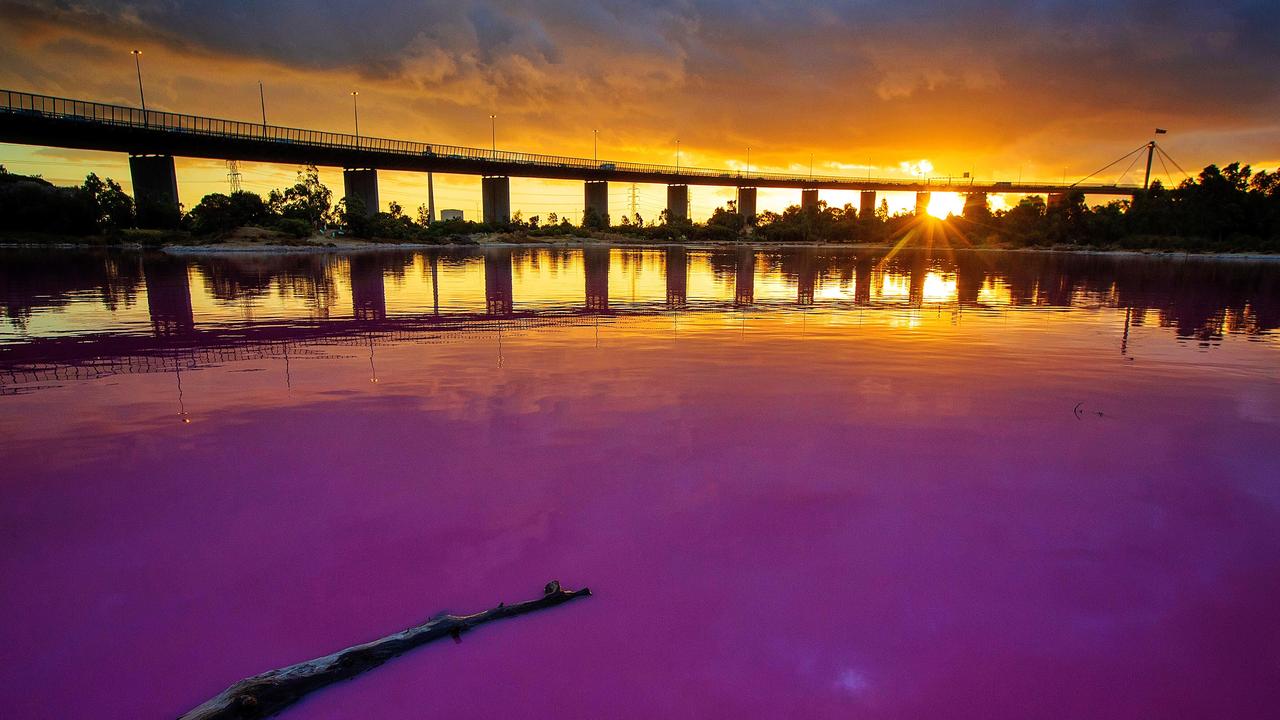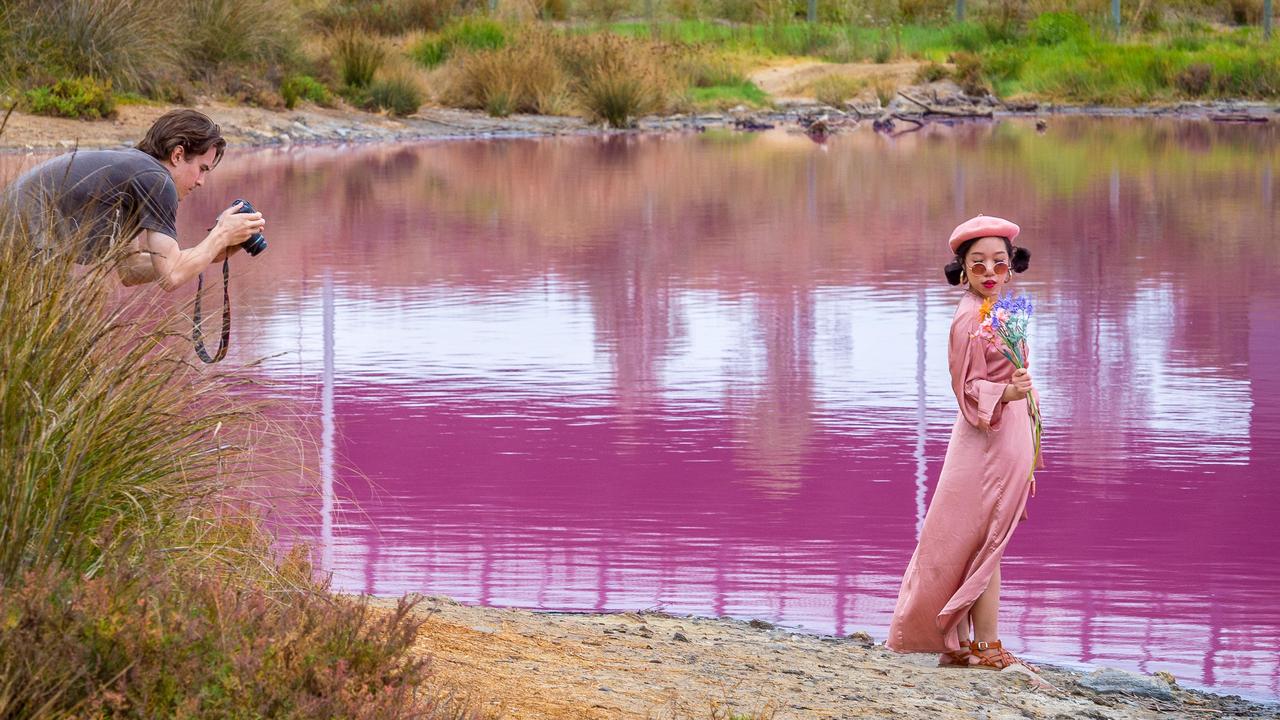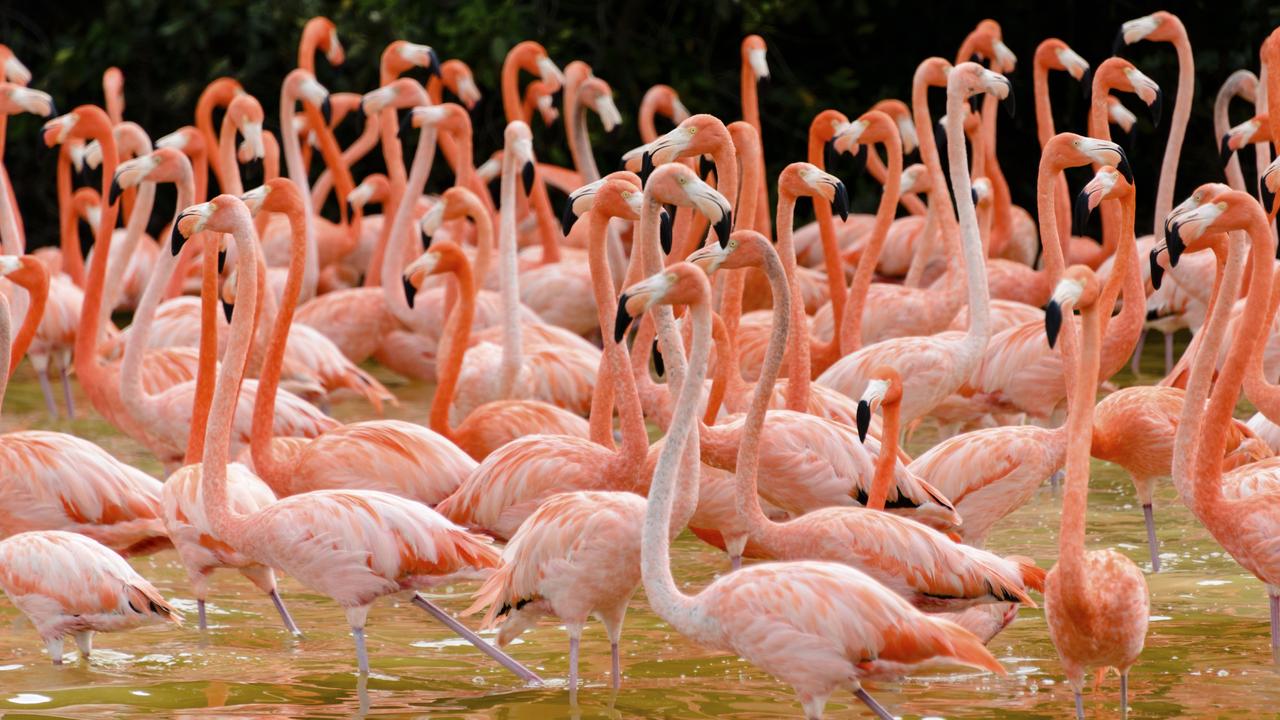Dry, hot weather has turned a Melbourne lake pretty pink
People who love pink are flocking like flamingoes to take selfies in front of a lake in Melbourne dyed by a population explosion of algae

READING LEVEL: GREEN
People who love pink are flocking like flamingoes to take selfies* in front of a lake in Melbourne.
The saltwater Westgate Lake, below West Gate Bridge in Port Melbourne, Victoria, has turned a pretty shade of lolly or lipstick pink because of perfect conditions for algae*.

Hot weather, lots of sunlight, low rainfall and high salt levels help the algae thrive.
The algae make the pink substance naturally, but when there is lots of algae, there is lots of pink pigment*.
“Algae growing in the salt crust at the bottom of the lake produces the red pigment (beta carotene) as part of its photosynthesis* process and in response to the extremely high salt levels,” said Phil Pegler, Manager Conservation Planning and Programs at Parks Victoria.
Mr Pegler warned against getting in the water to get the perfect photo for the safety of the photographer and the health of the environment.
“We recommend people avoid coming into contact with the water as it is very saline* so can cause skin irritation,” he said.
“In order to protect the sensitive saltmarsh* vegetation* around the lake visitors are urged to obey all signage* and any barriers in place.

The lake will return to its usual muddy brown when the weather cools and rain flushes it out, which will dilute* the concentration of algae, pigment and salt.
PINK LIKE FLAMINGOES
Flamingoes aren’t born pink. They look pink for a similar reason Westgate Lake looks pink.
They are born with grey feathers that gradually turn pink because they eat almost only algae, larvae and shrimp, which are high in beta carotene.

Flamingoes live in saltwater lakes and swamps where their food sources live.
Source: Encyclopaedia Britannica
VIDEO: Hutt Lagoon in WA, filmed with a drone by Shelley Tonkin.
Credit: @wheresshelley via Storyful
PINK LAKES TO FLOCK TO
Because Australia is often hot, dry and sunny, there are lots of pink lakes to see, including these:
WA: Lake Hillier, 130km from Esperance. This lake, right next to the beach, stays pink year round. Hutt Lagoon is a 14km-long lake on the midwest coast 535km north of Perth.

VIC: Lake Crosbie, Lake Becking, Lake Kenyon and Lake Hardy, Murray Sunset National Park, 50km south of Mildura.
SA: Lake Bumbunga in the Clare Valley, 133km northwest of Adelaide. Lake Eyre, in the north of the state, only fills every few years and when it does fill, the water is often pink. Lake MacDonnell is a coastal lake 864km northwest of Adelaide.
GLOSSARY
- selfies: a picture of yourself
- algae: a group of water organisms, including seaweeds
- pigment: colour
- photosynthesis: natural process in plants that converts carbon dioxide to carbon and oxygen
- saline: salty
- saltmarsh: salty wetland
- vegetation: plants
- signage: signs
- dilute: water down so it’s not as strong
EXTRA READING
Ocean colours changing with global warming
Australia’s last flamingo dies at zoo
Beach made of millions of pieces of ‘popcorn’
Healthy coral found in big Barrier Reef hole
QUICK QUIZ
- What is growing in the water that produces the pigment?
- What is the red pigment that makes the water look pink?
- Name two reasons why you shouldn’t swim in Westgate Lake?
- What colour will Westgate Lake be after it next rains a lot?
- What colour are flamingoes when they are born?
LISTEN TO THIS STORY
CLASSROOM ACTIVITIES
1. Why is the lake pink?
Create a flowchart or another type of diagram that will help another student understand the reasons why the Westgate Lake has turned pink.
Time: allow 25 minutes to complete this activity
Curriculum Links: Science, Geography, English
2. Extension
Create a script for radio or a storyboard for a television ad that will help people to stay safe when they are near the Westgate Lake
Time: allow 30 minutes to complete this activity
Curriculum Links: English, Media Arts
VCOP ACTIVITY
Fact or Fiction?
We know that the lake has turned pink due to the algae levels. But I want you to make up a more interesting and maybe a little crazy reason as to why the lake has turned pink. Maybe it’s made of fairy floss, maybe a paint truck carrying pink paint tipped over, maybe aliens turned the lake pink.
Now add even more to your story about what happens if you touch the pink lake!
HAVE YOUR SAY: What colour would you make the lake if you could? What would the wildlife think?
No one-word answers. Use full sentences to explain your thinking. Comments will not show until approved by editors.

